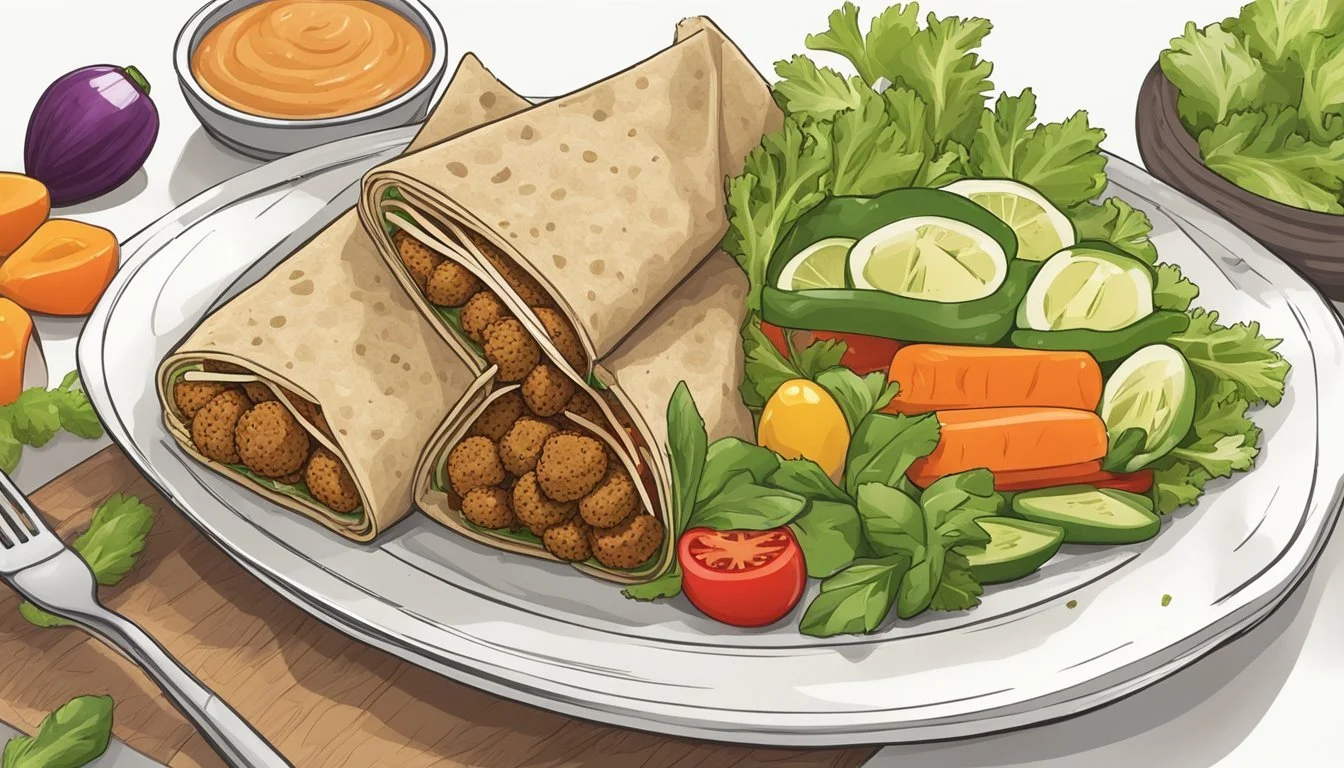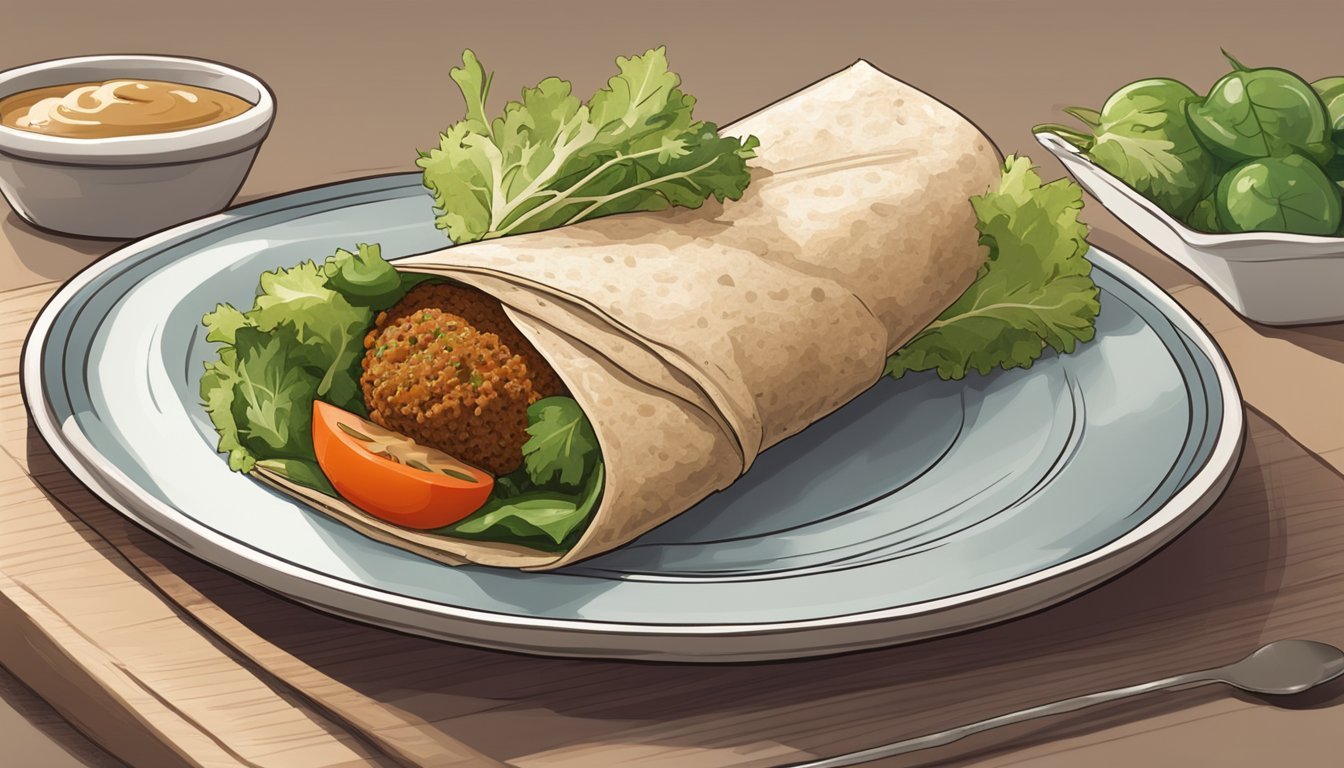How Long Do Gluten-Free Falafel Wraps Last?
Shelf Life and Storage Tips
Gluten-free falafel wraps are a delicious and healthy meal option, popular for their high protein content and vibrant flavors. When stored correctly, gluten-free falafel wraps can last in the refrigerator for up to four days, ensuring you can prepare them in advance and enjoy throughout the week.
To maintain their freshness, it is essential to store the falafel in a sealed container and reheat them properly. Reheating in an oven set at 350 degrees Fahrenheit for about 10 minutes can help regain their crisp texture. Freezing the falafel is another option, where they can last for up to a month, offering convenience for future meals.
Keeping the wraps separate from other ingredients, like fresh vegetables and sauces, is also key to preserving their quality. This method allows you to enjoy gluten-free falafel wraps at their best, ensuring that the flavors remain intact and enjoyable.
Understanding Gluten-Free Falafel
Gluten-free falafel offers a nutritious and versatile food option. It includes key ingredients like chickpeas and fresh herbs, providing essential nutrients while avoiding gluten.
Origins and Significance
Falafel is a staple in Middle Eastern cuisine, with historical ties to countries like Egypt, Lebanon, and Yemen.
It has roots in Arab culture but is widely enjoyed in Israeli food. Traditionally made from chickpeas or fava beans, falafel's importance extends beyond nutrition to cultural identity and heritage.
Key Ingredients and Alternatives
The primary ingredients in gluten-free falafel are chickpeas, fresh herbs (such as parsley and cilantro), garlic, and onion. Traditional recipes often use flour as a binder, but gluten-free versions replace it with gluten-free flour or xanthan gum.
These alternatives ensure the falafel remains suitable for those with gluten sensitivities while retaining the classic texture and taste. Flavored with cumin, coriander, and other spices, these ingredients collectively create a rich and aromatic dish.
Nutritional Profile
Gluten-free falafel is not only delicious but also nutritious.
Rich in protein and fiber, thanks to the chickpeas or fava beans, it supports digestive health and sustained energy levels. Fresh herbs like parsley and cilantro add vitamin C and other antioxidants.
Without gluten, it caters to dietary restrictions without compromising nutritional value. The combination of high protein and fiber content makes it a healthier option for vegan and gluten-free diets.
Preparing Gluten-Free Falafel Wrap
Making a gluten-free falafel wrap involves selecting a reliable recipe, skillfully assembling the wrap, and choosing appropriate cooking techniques. The goal is to achieve a delicious combination of crispy falafel and fresh ingredients in a gluten-free pita.
Gluten-Free Falafel Recipe
To prepare gluten-free falafel, start with dried chickpeas. They should be soaked overnight or boiled briefly and left to hydrate for an hour. The main ingredients include chickpeas, onion, garlic, parsley, and a mix of spices like cumin and coriander.
Using a food processor, blend these ingredients until they form a coarse mixture. It's important to include baking soda for a lighter texture. Shape the mixture into small patties or balls about 1 1/2 inches wide and 1/2 inch thick. This recipe can accommodate various preparations such as frying, baking, or air frying, depending on the desired texture.
Assembling the Wrap
Once the falafel is prepared and cooked, it's time to assemble the wrap. Use gluten-free pita bread; warm it slightly for flexibility. Spread a layer of hummus or tahini sauce on the bread.
Add freshly chopped vegetables like lettuce, tomatoes, onions, and cucumbers. Place a few pieces of falafel on top of the vegetables. For added flavor, consider drizzling extra tahini sauce or a light vinaigrette.
For a more substantial wrap, add pickles, olives, or a sprinkle of fresh herbs. Roll the pita carefully to avoid breaking it.
Cooking Techniques
For the falafel, a few cooking methods are available:
Frying: Heat cooking oil to 350°F and fry falafel until golden brown (about 3-4 minutes per side). This method results in a crispy texture.
Baking: Preheat the oven to 350°F. Line a tray with parchment paper and bake for about 20-25 minutes, turning halfway. This is a healthier option but may not be as crispy.
Air Frying: Preheat to 340°F and cook for 15-20 minutes, shaking the basket occasionally. It offers a good balance between crispiness and healthiness.
Each method will contribute uniquely to the flavor and texture of the falafel. Choose based on personal preference and dietary needs.
Storing Gluten-Free Falafel Wraps
To maintain the freshness and quality of gluten-free falafel wraps, proper storage methods are essential. This section explores short-term storage, long-term freezing, and how to revive leftovers effectively.
Short-Term Storage
When storing gluten-free falafel wraps for short-term use, refrigerate them. Place leftover falafel in an airtight container or wrap them securely in plastic wrap. Paper towels can help absorb excess moisture, keeping the falafel from becoming soggy.
Store them separately from pita or wraps to prevent any moisture transfer. Refrigerator storage keeps falafel fresh for up to four days. When ready to eat, reheat them in an oven set at 350°F for about 10 minutes to regain their crispy texture.
Long-Term Freezing
For long-term storage, falafel wraps can be placed in the freezer. Before freezing, ensure the falafel are completely cool. Arrange them on a baking sheet lined with parchment paper before transferring them to freezer bags or an airtight container.
Frozen falafel last up to one month. When reheating, thaw them in the refrigerator overnight. For best results, reheat in an oven set at 350°F until heated through. This method helps maintain texture and flavor.
Reviving Leftovers
Leftovers can still be delicious. To revive leftover falafel, use an oven or toaster oven to reheat them to restore their crispiness. Preheat the oven to 350°F and place the falafel on a baking sheet.
For added moisture, cover them with aluminum foil during the first few minutes of reheating. If using a microwave, reheat in 30-second intervals to avoid overcooking. Serve immediately with fresh pita and toppings to enjoy a rejuvenated meal.
Serving Suggestions
These suggestions will enhance the flavor and presentation of gluten-free falafel wraps, making them delightful and complementary to the core ingredients. Options span a variety of sides, toppings, and drinks, ensuring a well-rounded experience.
Complementary Sides and Toppings
Vegetables: Fresh vegetables such as lettuce, tomatoes, cucumbers, and red onions add a crisp texture and refreshing taste. Including a variety of vegetables enhances both the flavor and the nutritional value of the wraps.
Sauces: Popular choices are hummus and a tahini dip. These sauces provide additional depth of flavor, complementing the spices in the falafel. Adding a drizzle of lemon juice can also bring a zesty kick.
Healthy Ingredients: Incorporate ingredients like avocado slices for creaminess or pickled vegetables for a tangy contrast.
Wrap Options: In addition to gluten-free pita bread, leafy greens like lettuce can be used as a wrap to add freshness and a healthy twist.
Middle Eastern Cuisine: Pairing falafel wraps with traditional sides like tabbouleh or a simple chickpea salad can elevate the meal.
Pairing with Drinks
For refreshing beverages, lemon-infused water or iced tea with mint complements the flavors without overpowering them. These drinks offer a balanced, hydrating option that pairs well with the spices in the falafel.
Middle Eastern-Inspired Drinks: Consider serving ayran (a yogurt-based drink) or pomegranate juice for an authentic touch.
Non-Alcoholic Options: For a non-alcoholic treat, sparkling water with a squeeze of lemon or lime provides a crisp, refreshing experience.
Light Alcoholic Options: Light, dry white wines or a crisp lager can also be paired with falafel wraps for those who prefer alcoholic beverages. These options are refreshing and do not compete with the bold flavors of the dish.
Health and Dietary Considerations
Gluten-free falafel wraps offer numerous health benefits, particularly for individuals with specific dietary needs. Key points include how these wraps support those with gluten sensitivities and their nutritional profile concerning calories, protein, fiber, and other macronutrients.
Benefits of Gluten-Free Diets
Gluten-free diets are essential for individuals with celiac disease or gluten intolerance. Eliminating gluten helps prevent symptoms such as bloating, diarrhea, and stomach pain.
Consuming gluten-free falafel wraps can also support better digestion and nutrient absorption. The absence of gluten allows the intestines to heal, reducing inflammation.
Moreover, many gluten-free foods, including these wraps, are made from whole, natural ingredients, enhancing overall nutrition with added vitamins and minerals. For those following a vegan diet, these wraps provide a reliable plant-based protein source.
Caloric and Macronutrient Breakdown
Each gluten-free falafel wrap typically contains around 300-400 calories, depending on the ingredients and portion size.
The protein content ranges from 10-15 grams per wrap, mainly due to the chickpeas. This plant-based protein is beneficial for muscle repair and energy.
Carbohydrate levels are moderate, providing a good source of energy without causing significant blood sugar spikes.
Fiber content is high, promoting healthy digestion and prolonged satiety. These wraps often contain 7-10 grams of fiber, enhancing digestive health.
Fat content varies but generally includes healthy fats from ingredients like olive oil or tahini, balancing the macronutrient profile effectively.
Conclusion
Gluten-free falafel wraps can be a delightful addition to anyone’s diet. When properly stored, they can remain fresh and satisfy cravings for several days.
Storage Tips:
Refrigeration: Store leftover falafel in a sealed container in the fridge for up to 4-5 days.
Freezing: For longer storage, freeze the falafel for up to 1 month. Wrap them individually to maintain freshness.
Reheating:
Oven: Reheat in the oven at 350°F for about 10 minutes to regain their crispy texture.
Microwave: For a quicker option, use the microwave, though this may result in a softer texture.
Taking these steps ensures that gluten-free falafel wraps remain tasty and safe to eat. Proper storage and reheating methods are essential to maintain their quality and enjoyment. This makes it easier to enjoy these wraps during any culinary exploration.
The satisfaction of enjoying a homemade gluten-free falafel wrap remains unmatched, offering a flavorful and convenient meal option.







